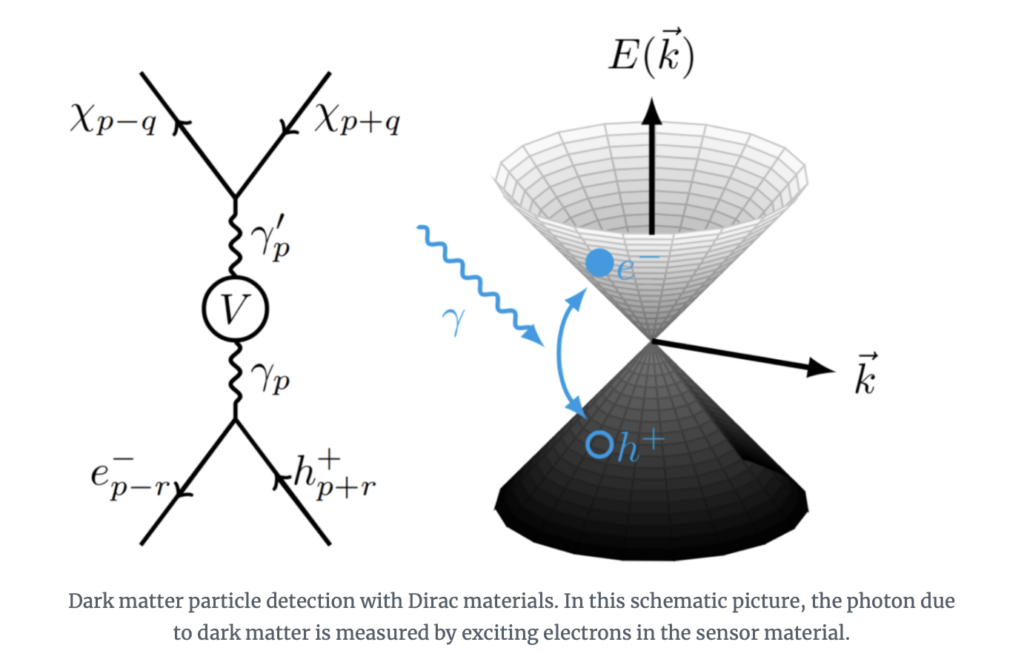
Graphene sparks interest in dark matter scientists who search for devices that would be most suitable in detecting dark matter, using such properties of graphene like the small gap in massive Dirac cones [1, 2] or as graphene layered in heterostructure with hexagonal boron nitride atop graphene MoS2 bilayer photodetector [3]
[1] R. Matthias Geilhufe, et al., “Materials Informatics for Dark Matter Detection“, Physica Status Solidi-Rapid Research Letters, 2018
[2] Bart Olsthoorn and Alexander V. Balatsky, “Mass fluctuations and absorption rates in Dirac materials sensors“, Materials Science, Physics, 2019
[3] Shang-Yung Wang, “Graphene-based detectors for directional dark matter detection“, Eur. Phys. J. C, 2019
